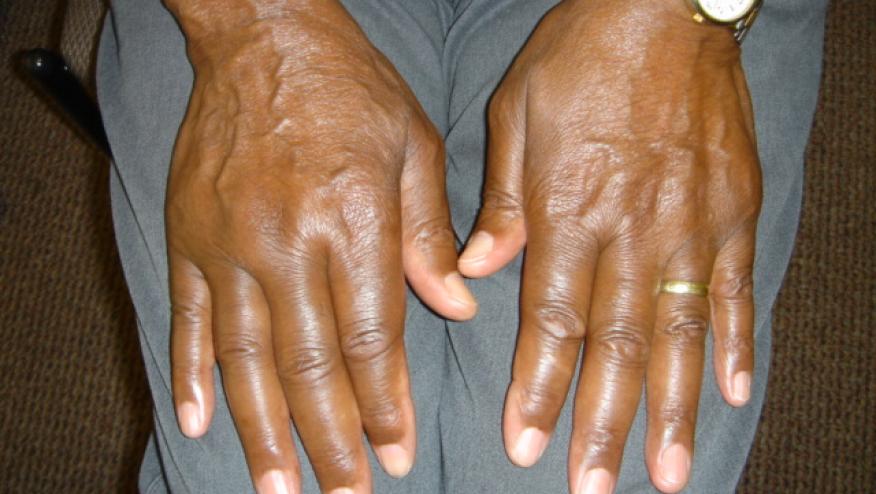EULAR 2024: New drugs for RA? Save

While everyone is getting ready for EULAR 2024, dissecting the scientific program for what promises to be an exciting knowledge exchange, I am personally very enthusiastic about potential new drugs or promising mechanisms of action in rheumatoid arthritis. I realized that several abstracts are presenting new compounds, targeting either RA well-known inflammatory pathways or offering new mechanisms of action or therapeutic sequences; these are summarized below.
In OP0036, Jenkins and colleagues present the results of a Phase II RCT of Abiprubart (KPL-404), a humanized monoclonal IgG4 antibody with a stabilized/functionally-silent Fc region that binds to CD40 and inhibits the CD40/CD154 costimulatory interaction, hereby inhibiting T cell activation after antigen presentation. In other terms, Abiprubart is an Abatacept distant relative, targeting T cell activation through a different target/molecular interaction (CD40/CD154). The authors propose that the compound does not lead to lymphocyte depletion. This proof-of-concept study aimed at assessing efficacy, safety & pharmacokinetics in RA patients.
Nearly 100 patients with RA and inadequate response to a first biologic/tsDMARD were recruited. The trial met its primary endpoint with statistically significant reduction in DAS28-CRP at Week 12 in the 5mg/kg SC weekly dosing group, compared to placebo; with an acceptable safety profile. Another study is ongoing, definitely a compound to keep an eye on!
OP0052 and OP0079 both look at other ways to inhibit IL-6 pathway.
In OP0052, Feist and colleagues are presenting data for Olokizumab (OKZ), a direct IL-6 Inhibitor. The particularity of this molecule is that it binds to the actual IL-6 ligand rather than its receptor. The authors have published their Phase III RCT. They now present a retrospective study looking at one year efficacy and safety data, after switching from an IL-6R inhibitor. While the data from 110 RA patients are reassuring with patients largely retaining remission, it remains unclear why patients treated with Tocilizumab or Sarilumab a few years would be switched to OKZ. The authors mention the main reason to be the unavailability of IL6-R inhibitor, which could be due to geographical variations in accessing biologics.
In OP0079, Ye et al. VDJ-001 is a novel humanized IgG1 monoclonal antibody for which the authors claim a higher-affinity and more potent in reaction with IL-6R through a B cell hypermutation mimicking technology. The authors present the results of an RCT in bio-naïve RA patients comparing VDJ-001, Tocilizumab and placebo. Aside from a safety profile similar to TCZ, efficacy was similar and significantly higher than placebo with >80% ACR20 responders; and 33.3% (VDJ-001 6mg/kg) and 25.6% (Tocilizumab 8mg/kg) ACR70 response (not significantly difference). While the authors claim that these data make VDJ-001 “one of the best treatment options for RA patients”, there is no current plan for this drug to reach the European market as we speak.
Rather than proposing a new compound, in OP0069, Kleyer and colleagues suggest a new therapeutic sequence: Rituximab followed by Abatacept in ACPA- positive RA versus Rituximab alone (TOLERA). While the strategy is seductive from a biological point of view - suggesting the potential to re-induce humoral immune tolerance - the results of this phase II open label study was disappointing. First, the choice of primary outcome was interesting (and ambitious): seroconversion of anti-CCP2 antibody (<5U/ml) at week 52. The rationale for this was that RTX and ABA have been shown to reduce ACPA levels. The authors hoped that the RTX/ABA sequence would halt autoantibody production and restore immune tolerance, aiming for a “deep” immunological remission”. Although the number of patients was small, no seroconversion occurred nor any significant difference in ACPA levels or disease activity. Despite a reassuring safety profile, these results do not leave much hope for the RTX/ABA sequence.
Last but not least is OP0110, with Sims and colleagues presenting a new mechanism of action in RA. Anti-citrullinated autoantigens are known to be generated by Peptidyl Arginine Deiminase (PAD) enzymes, which are predominantly expressed and released by neutrophils. It is thought that inhibiting PAD enzymatic activity could provide clinical benefit, hence the development of a PAD2/4 bi-specific Antibody. It’s very early days for this compound, but the authors deliver here a proof of concept that the molecule does what it says, inhibiting all endogenous PAD activity in the serum and synovial fluid of RA patients. A compound still at the pre-clinical development stage, but surely something to watch out for.











If you are a health practitioner, you may Login/Register to comment.
Due to the nature of these comment forums, only health practitioners are allowed to comment at this time.